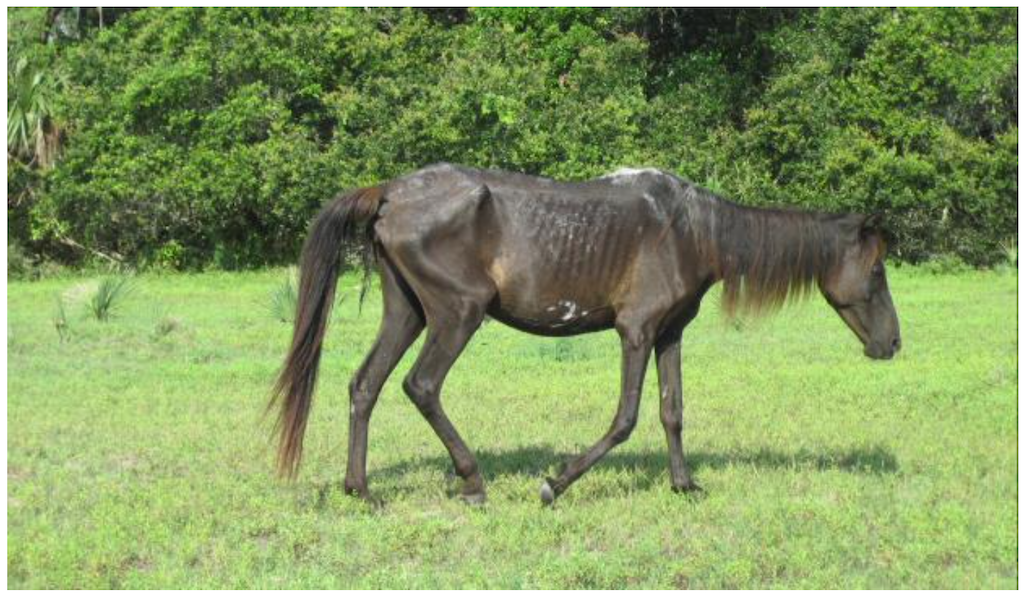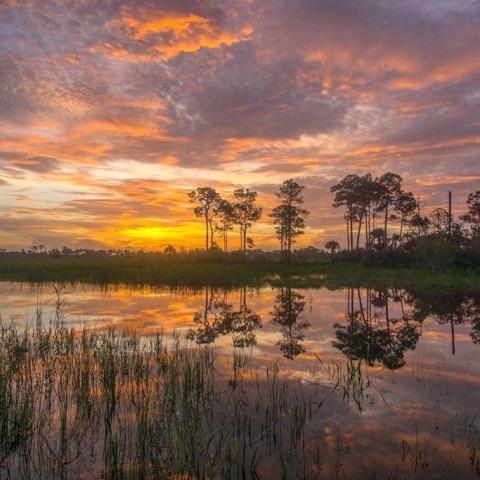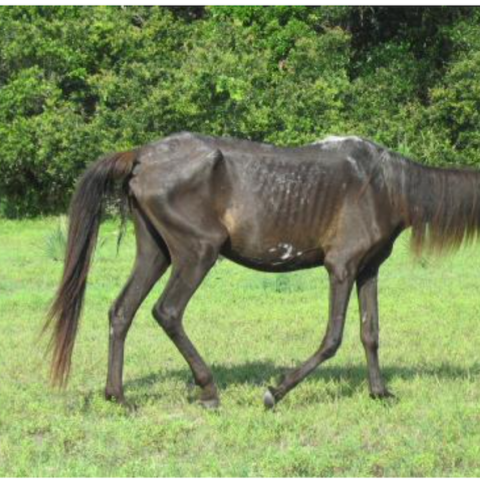Two weeks out from the presidential election, it's time to take stock of the national parks and the National Park Service, but it's not all political fallout. There will be time to assess that, but now there are some matters that have given me some pause.
National Park Service Rewarded For Doing Nothing
Why is the National Park Service ignoring the obvious plight of feral horses at Cumberland Island National Seashore in Georgia and the native ecosystem and threatened and endangered species there?
Anyone?
Even a federal judge who handled a lawsuit asking that the Park Service be ordered to remove the horses was at a loss to explain the agency's actions.
"[N]o one wishes to see animals suffer," wrote Judge Sarah E. Geraghty in her ruling to dismiss the lawsuit, "and Plaintiffs have plausibly argued that the NPS should take steps to protect and manage Cumberland Island’s feral horse population, not only for the well-being of the horses, but also to preserve the island’s ecosystem and its endangered species. While this case must be dismissed, the Court hopes that the important issues Plaintiffs have raised here might spur the NPS or other agencies to act."
The judge didn't sound like she wanted to dismiss the lawsuit, but because the Park Service hadn't taken any action at all to manage the horses, the plaintiffs couldn't point to any action that the judge might overturn.
"In fact, according to Plaintiffs’ own allegations, the NPS has simply taken no action with respect to the feral horses at all—its policy has been one of non-intervention," she wrote.

Now that litigation had ended over feral horses at Cumberland Island National Seashore, will the Park Service do anything to help the horses or protect the ecosystem?/Wild Cumberland
Perhaps Park Service Director Chuck Sams, who stepped in to allow the Jemez pueblo to kill eagles at Valles Caldera National Preserve for ceremonial purposes, could step in at Cumberland Island and see that his agency lives up to the National Park Service Organic Act mandate that it "conserve the scenery and the natural and historic objects and the wild life therein and to provide for their enjoyment in such manner and by such means as will leave them unimpaired for the enjoyment of future generations."
Now that the lawsuit has been dismissed, we've reached out to Cumberland Island Superintendent Melissa Trenchik to see if the Park Service will take any steps to rescue the horses or protected the endangered loggerhead turtles or threatened piping plovers that visit the island.
It's certainly possible that park staff at Cumberland Island or the Southeast Regional Office that the seashore reports to has been unable to obtain funding to implement a feral horse management strategy. It's also possible that they have a project proposal ready to go and waiting for funds implement it. But so far the Park Service hasn't addressed those questions with the Traveler. But if such a proposal were ready to go, wouldn't you think the agency would be happy to discuss it?
I wonder what PETA thinks of the case?
Wilderness Lost
In another baffling decision, the Park Service identified roughly 190,000 acres of wilderness quality lands in Big Cypress National Park in Florida, but decided not to propose any of them for formal wilderness designation. None.
Why? Because of opposition from the Miccosukee and Seminole tribes, which feared such a designation would deny them their "'usual and customary use and occupancy of federal or federally acquired lands and waters within the preserve and the Addition, including hunting, fishing, and trapping on a subsistence basis and traditional tribal ceremonials,'” as outlined by the preserve's enabling legislation.
But Fred J. Fagergren, the preserve's first superintendent back in 1974 when it was created, says the Park Service continues to misinterpret Big Cypress's enabling legislation.
"There is nothing within Big Cypress's legislation or legislative history that states or suggests that '[the tribes] are entitled to co-management consideration,'" he says. "Rather, the legislation and legislative history states [the tribes) 'usual and customary use and occupancy of Federal or federally acquired lands and waters, including hunting, fishing, and trapping on a subsistence basis and traditional tribal ceremonials' shall be subject to reasonable regulations established by the Secretary. While we made an effort to initiate such regulations during my tenure, no such regulations have been proposed or established. Such regulations and the process involved in establishing them would provide an opportunity to assess and thus manage the usual and customary use and occupancy while protecting the resources of the preserve as fundamentally required by its legislation."
Big Cypress staff also opposed wilderness designation because of their need to "to routinely access and/or take management actions on wilderness eligible lands for resource management purposes, such as wildland and prescribed fire, invasive species management, and ecological restoration, including future manipulations to restore a more naturally functioning hydrologic regime."
This also appears to be a misreading on Park Service policy, as access to lands designated as wilderness would still be available to the agency and the public — including the tribes — provided they comply with the restrictions on motorized access outlined in the Wilderness Act. Park Service policy clearly allows for scientific research and resource management for fire management and to restore natural conditions, and motor vehicles could be permitted provided they were demonstrated as necessary for the administration of the area as wilderness.
It's ironic that the largest federal wilderness east of the Rockies, the 1.3-million-acre Marjory Stoneman Douglas Wilderness, is immediately adjacent to Big Cypress in Everglades National Park. While wilderness management has at time challenged the Everglades staff, they make it work there, and also happen to have the largest natural resource management program in the entire Park Service, doing world-class ecological and hydrological restoration in the wilderness area. Everglades staff were recognized with the NPS national wilderness award, in fact, several years ago, for their wilderness planning and management efforts. Clearly, wilderness can be done and done well in south Florida.
Perhaps most ironic of all for Big Cypress is that now that they have identified so much of the national preserve as having wilderness-eligible lands, they are required by law to manage them in conformance with the agency’s wilderness management policy until Congress acts to either designate those lands as wilderness or to remove them from further consideration as wilderness. That’s probably why the Florida Congressional delegation is working feverishly to pass a law that would prohibit the Park Service from designating any wilderness at Big Cypress.
This case study is also likely to be a touchpoint for the incoming Trump administration as it reviews all Park Service policies.

There is no official wilderness at Big Cypress National Preserve, although the Park Service says there are wilderness-eligible lands there/NPS file
Longtime readers might recall that back in 2011 the Park Service declined to propose a large swath of wilderness when it had the chance, and instead favored motorized access. In that situation, the agency had 147,000 acres in the northeastern corner of the preserve, a section of land known as the "Addition" for its connection to the preserve in 1996 as the result of a land swap with the state of Florida, to consider for wilderness qualities. By adopting its preferred alternative, one criticized by the U.S. Environmental Protection Agency, members of Congress, and conservation groups, the Park Service chose to "maximize motorized access, provide the least amount of wilderness, and develop limited new hiking only trails."
While the Park Service had identified 71,260 acres in the Addition to propose for wilderness designation, the agency choose to recommend 47,067 acres, but official designation never arrived. The approved alternative authorized roughly 130 miles of new ORV trails, trails the Park Service acknowledged "would fragment native habitat and degrade natural conditions in certain areas that were evaluated as eligible for wilderness designation. ORV use would adversely affect the natural soundscape of the area. Impacts would be reduced by the use of a designated trail system, limiting changes to natural conditions and wilderness character outside of the trail system. Impacts from visitor use would be long term, moderate, and adverse."
It's true, there’s considerable opposition to wilderness designation at Big Cypress. But a more nuanced, sophisticated, and law-and-policy-informed-approach by the Park Service could have come up with a reasonable wilderness proposal that spelled out what could still occur within the wilderness, and how it could be managed to allow appropriate recreational activity, protect resources, restore hydrological and ecological systems, and provide appropriate access for tribal members. But sadly, the short-sighted actions of the Park Service at Big Cypress — and you have to assume, concurrence by the regional and national offices — may have the result of weakening the protections for wilderness eligible lands throughout the National Park System.
Pierce Got Off Extremely Lightly
Remember back in January, when actor Pierce Brosnan was cited for walking in closed thermal areas of Yellowstone National Park? And remember when he was fined $500 and placed on two years probation?
Fast forward to this month, and you might be left wondering why another Yellowstone visitor who wandered off designated pathways was fined $3,000 and sentenced to seven days in jail. The fine related to unspecified damage to a thermal feature, but the jail sentence was tied to his going off trail in the first place. This man's off-trail stroll was at Canary Spring at Mammoth Hot Springs, the same general area where Brosnan went off trail.
Mum Is The Word
With time running out on the Biden administration, it's disappointing that Park Service Director Chuck Sams has largely shut out the media. While he has talked to "friendly" outlets or for interviews involving tribal outreach by the Park Service, he has granted the Traveler just one 15-minute conversation, and that came shortly after he was confirmed three years ago. Time and again he has declined our interview requests.
Like it or not, Park Service directors need to be accountable for their agency's actions and shouldn't take a pledge of silence when it comes to media trying to explain the agency's actions. I've heard that Sams is both articulate and well-versed on the issues the Park Service encounters, which makes his three years of ignoring the only media outlet focused entirely on national parks and the National Park Service both puzzling and disappointing.











Comments
Keep pushing Kurt. In many ways, this Biden-Harris DOI Administration has been the most non-transparent and non-participatory in decades. They have shunned career staff, always knew better on any issue, and had no problem on lecturing us on the morality and superiority of what they were doing (sounds like the same problem the entire Democratic Party has right now). It has been overall, a very dismal performance.
Time for a change.
Why? Because of opposition from the Miccosukee and Seminole tribes, which feared such a designation would deny them their "'usual and customary use and occupancy of federal or federally acquired lands and waters within the preserve and the Addition,
Truly odd considering that the traditional homelands of the Miccosukee and Seminole tribes were NORTHERN Florisda, Alabama, and southern Georgia--hundreds of miles from southern Florida and Big Cypress NP.
What the heck is going on? Can someone explain this?
I wonder what PETA thinks of the case?
Not that we should care what PETA thinks.
PETA has become a fundraising machine that feeds the fundraising machine, and funds the legal defense of arsonists and the environmental terrorists at the Earth Liberation Front. Or that PETA's kill rate at its animal shelters is routinely 90% (VA). Or that it has had to pay settlements for illegally seizing pets and killing them. Or that more and more of its budget has gone to lobbying, and public campaigns to eliminate meat consumption,and targeting legitimate businesses like PetSmart.
All of which leaves less and less for actual care of animals.
If its record in Virginia is any indication, PETA would likely kill 90% of the feral horses at Cumberland; in which case, it may be the solution to the feral horse problem at Cumberland NS.
Thanks for trying to keep them accountable. A core value for any public servant. The lack of transparency is especially troublesome